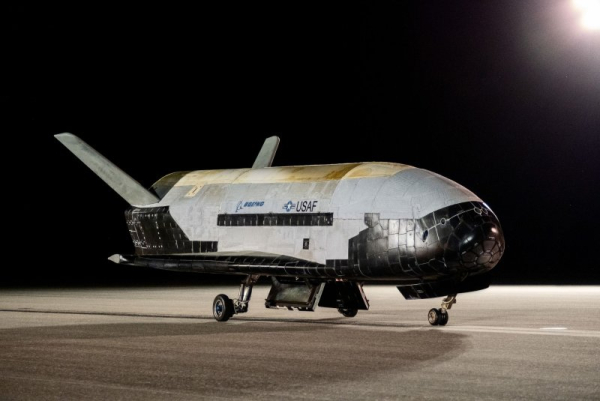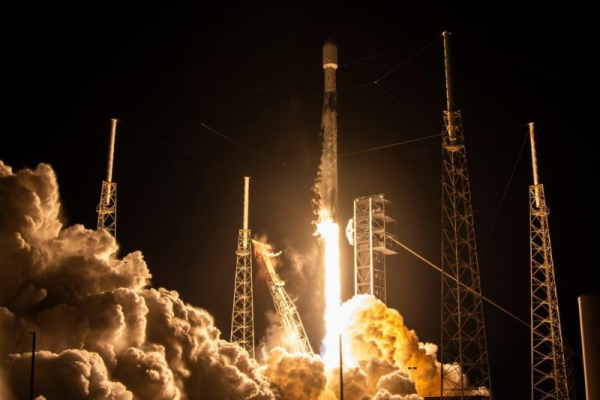
SpaceX launched an experimental space plane for the U.S. Space Force from Florida on Thursday evening.
A Falcon 9 rocket launched the U.S. Space Force's X-37B spaceplane from Kennedy Space Center at 11:50 p.m. ET.
“Take off!” SpaceX shouted on Channel X as they celebrated the launch.
Forecasters were predicting a 65% chance of favorable conditions for launch, with the chance of improving conditions reaching 80% as the window progressed. Forecasters were monitoring the possible impacts of Hurricane Erin as it moved along the East Coast.
“Very Large Hurricane Erin will continue north and eventually northeast off the East Coast of the U.S. before emerging into the open Atlantic by the end of the week,” the meteorologists responsible for the launch wrote. “As it moves, it will leave behind a trough and deeper layers of moisture that will merge with a boundary dipping into the southeastern U.S. The prevailing flow will shift from the west on Thursday, leading to better coverage of afternoon and evening storms in the eastern portion of the state, including the spaceport.”
The Boeing-developed X-37B drone will fly USSF-36, also known as Orbital Test Vehicle 8, in which the Space Force is trying to test a new positioning system in space.
The mission will include a demonstration of a laser communications system and what the Space Force called “the highest performing quantum inertial sensor ever used in space.”
“The demonstration of the OTV-8 quantum-inertial sensing system is a welcome step forward in ensuring operational sustainability in space,” said Col. Ramsey Horn, Space Delta 9 commander. “Whether navigating beyond low-Earth orbit in cislunar space or operating in GPS-denied environments, quantum-inertial sensing provides a robust navigation system when GPS navigation is not possible.”
This is the sixth flight of the Falcon 9 booster; the booster was used on the NROL-69, CRS-32, GP III-7, and Starlink 12-13 and 10-34 missions.
Sourse: www.upi.com





